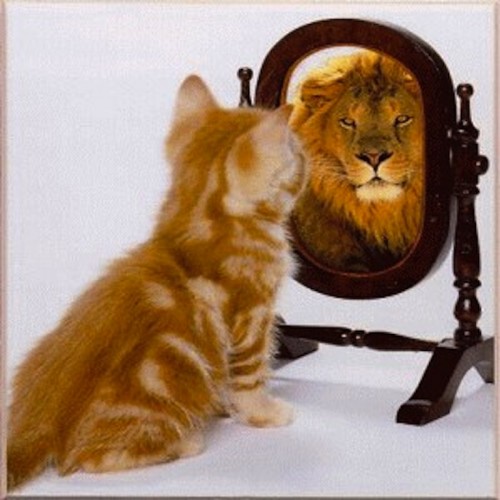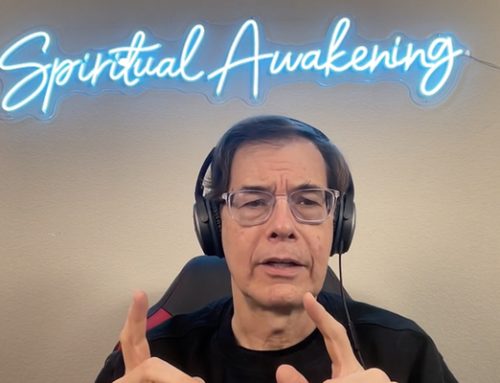Howdy!
I hope your day was as productive and purposeful as mine yesterday.
I’ve been successful at rounding up some very excellent, elite presenters to share in our upcoming CHEK Conference September 2-4, 2011 here in beautiful (usually) sunny San Diego.
I just got off the phone with Dr. William Previte, D.O., who in my opinion (based on lots of experience with him) is definitely one of the top orthopedic surgeons in the world. He very excited to come present, participate, and as he said, “I’d love to meet more of your practitioners!” This is great news.
Dr. Previte is a meticulous surgeon and in the 23 years I’ve been working with him sharing clients, I’ve never seen him produce anything but good results. I’ve referred him some of the best athletes in the world and all have reported back to me singing is praises, so we can consider ourselves lucky to have such a top flight presenter among us for the conference.
We will also feature a number of other fantastic presenters such as Reed Davis who provides Functional Diagnostic Nutrition Training to CHEK practitioners, and David Getoff with the Price Pottenger Foundation. Other CHEK Instructors and practitioners are submitting some really great presentation titles.
Before I approved Reed’s FDN courses for CHEK Practitioners, I met with him to see if we had any philosophical differences with regard to how functional medicine should be used in an overall holistic approach to healing and cultivating well-being. I was very happy that he agreed with me that patients should be grounded in the six foundation principles we teach in our HLC training as an essential part of functional medicine. So far, I’ve had only positive feedback from the students attending his courses, which is a great forecast for his presentations.
When Matthew Wallden organized our first CHEK Conference in London, I was truly blown away at the amazing presentations the CHEK Practitioners and instructors gave. In fact, Cass and Judy Ingram, owners of American Wild Foods were vendors at that conference and Cass and Judy both said they were very impressed with the depth and clarity of the presentations. I was grateful to hear that from Cass because in my opinion, he’s one of the most accomplished, holistically minded physicians I’ve ever met and worked with. In fact, I think Cass will be presenting at the conference too!
As it stands right now, I know there will be several therapists, coaches and trainers from top sports teams from around the world in attendance, which is great too!
I will give a variety of NEW presentations as well. I will try and cover topics that are relevant to a large variety of professionals and people.
If you haven’t checked out the conference details on the CHEK Institute web site, click here and you can check it out in a flash!
I’d absolutely love to share these great presenters and their presentations with all of you. I’ve asked all the presenters to be sure to keep the presentations practical, not just theoretical. Personally, I find practical application materials much more valuable than stacks of research data that usually ends with a conclusion that says something like, the data suggest we need to more research on such and such to determine if such and such is actually happening!
I’m also now elbows deep (finger tips actually ;-)) into the revisions for the new printing of How To Eat, Move and Be Healthy!
I’ve learned so much about how to help people heal and achieve their dreams since I wrote the book seven years ago. It’s so strange that it’s been that long already. I will implement my 1-2-3-4 approach to living your dreams in the new book. Additionally, I’ll be adding some essential infant development exercises as well as more information on managing fungus and parasite infections and more.
I can’t wait to share it with you when it comes off the press later this year!
It’s pretty amazing when you consider that not one of the major publishers in LA and New York would publish my book; they all told me pretty much the same thing; “If what you say in this book is correct, it means that pretty much every one of our health and exercise authors is wrong. If we published this book, we’d have a coo on our hands!”
Well, as you can imagine, I not only told them that indeed, their authors were incorrect at large, I told them I’d be more than happy to prove it to them! Some of them allowed me to give demonstrations to do exactly that.
Even though every such one of them did agree that my approach definitely was more comprehensive and all-inclusive, they still wouldn’t publish it. Well, it looks like they missed out because this next printing should take us over the 100,000 books in print mark, which by any publisher’s standard is a best seller! Oh well, their loss, your gain.
The new version will be the most user-friendly of the lot, so keep your eyes out for it, even if you already have it. The changes I’m making will take your use and practice with the methods to a whole new level of effectiveness.
That said, let’s get started with the message I wanted to share with you today, which is straight out of the box PPS Success Mastery training!
MIRRORS, CRYSTAL BALLS AND ANGELS! (Part 1. Of 3)
All the people you will ever meet and interact with in your life will serve as a mirror, a crystal ball, and/or an angel in your life.
Some will be a mirror for you. Some will offer you the crystal ball, some will be a potential angel, and some may be all three combined.
In this, and the following two blogs, I’ll highlight how the mirror, crystal ball and the angel appear in our lives. I’ll do my best to share ways to know when each option is before you, and how to best manage the opportunities presented to you in each such instance. Today, we will begin with the mirror.
THE MIRROR
The mirror is a very powerful tool. It represents the three essential qualities of the soul, which are:
- Reflection
- Representation
- Abiding.
Let’s look at how they work in your life.
Reflection: Whenever you look into a mirror, you are not actually seeing what you truly represent. You are seeing a reflection of what’s standing in front of the mirror.
I could show you a thousand photos of people standing in front of a mirror, and unless you had personal experience interacting with them, all you could do is guess what they represent. What you represent is exemplified, first and foremost, as the values you live.
One of the challenges of the mirror is that many people actually invest more belief in what they see in a (physical) mirror than they do in what they authentically represent as human beings.
For example, if women don’t have big enough breasts, they may actually believe that they can’t be sexy and attractive without bigger boobs.
Therefore, they go buy a set. Then, they look in the mirror and believe they are sexy. The problem is that sexiness isn’t a quality of tits, it’s a quality of who you are and what you feel and represent within yourself and in interaction with self and others.
A sexy woman with no tits is worth a bus load of entangled women with fake tits that aren’t authentically sexy. Remember, no matter how much energy you invest into the reflection in the mirror, it will never brush your teeth, nor its own! (it is not my intention to be sexist, the same can be said of males!)
Representation: When you look in the mirror, you may be frustrated at the way your hair is behaving. You may or may not be satisfied by what you see looking at your reflection. What you can see of yourself, can only represent who you are to the degree that what you are looking at reflects your values.
If you stated values require that you be fit and trim, and you don’t see that being reflected back to you, then you and only you can assess the authenticity of what your reflection represents.
If I were to see you standing in the mirror and you are 60 pounds over-weight, I could easily, and dangerously assume that your values don’t represent being fit and trim.
What I don’t know is how much weight you may have lost in the past several months. You may have been 120 pounds over weight just a year ago. Therefore, assuming that what I see doesn’t represent the values of being fit and trim would represent my own projection; I’m projecting my values onto your reflection and making my own value judgments as to what you may or may not represent largely out of ignorance.
In actual fact, having lost 60 pounds because you have been living your new found values of being healthy and fit does exemplify that indeed, you are relatively fit and trim.
That said, the mirror effect does offer a tremendous amount of beneficial information and experience to the aware observer.
When you meet someone or interact with them, the mirror effect is in play in the following ways:
A. Humans, like most animals in nature, are endowed with a class of neurons called “mirror neurons”.
Animals with adequate mirror neurons can recognize their own reflection; A chimpanzee, a dolphin, and elephants do recognize their own reflection (see the works of paleontologist Franz deWall).
For the most part, dogs and most paleo-mammals and reptiles don’t. They think and act as though their reflection is another animal all together. I’ve personally seen cats and dogs going at mirrors with a vengeance, not realizing at all that they were trying to out-smart and out-maneuver themselves.
You will notice, if you pay attention, that when two people meet, there will always be a dominant and a sub-dominant personality. If the dominant personality is sitting with their legs crossed, usually in just seconds, a minute at the most usually, the sub-dominant personality will emulate them and sit with their legs crossed.
If the dominant personality talks fast and butts in a lot, very soon, the sub-dominant personality will begin talking faster and butting in. If you are comfortable swearing in your conversations, in short order, even a dogmatic orthodox Christian will often start slipping out swear words to express themselves. And so on!.
This aspect of the mirror effect is a calling to your own awareness. Do you want to mirror a person with values and personality traits that may conflict with your own?
If not, shift your energy. Step fully into your body-mind, and consciously choose to lead them! If you don’t, realize it or not, you may end up going to dinner with your parents and asking your mom to “pass the fucking rolls!” And the rest!
Therefore, this aspect of the mirror of relationships offers you a chance to take responsibility for your own mind and your own actions.
B. The mirror gives you an opportunity to test, cultivate and effectively utilize leadership qualities with others.
To the degree that you understand the mirror effect, you also understand that if you emulate people who’s values have led them into unpleasant challenges in their life and their relationships, you may choose to not emulate them, but lead them.
This again, requires that you be aware. Most of human actions are sub-consciously driven. You must choose to be “conscious” in order to use the mirror effect effectively in your life.
The mirror also allows you to see and experience your influence on others.
Once I was lecturing in London. I stood on stage and looked out at the audience. I almost fell over backward when I saw 30 or more guys, well put together, wearing Desoto clothing, with bald heads!
I was better able then and there to see both how I was being mirrored, and through conversation or questioning with some of them, what of my representations (my values) were being authentically interpreted and emulated.
Abiding: The mirror doesn’t do anything, it is neutral; an actual state of abiding. It is simply “being a mirror”, “being present”. There is no action or effort, no thought, no planning, not even a purpose from the mirror as a mirror. It is simply there, mirroring like water is wetting without doing.
When you are with another person, you can choose to abide. To “be”. You don’t need to cross your legs. You don’t need to speed your tempo, nor do you need to butt in to get a word in here and there. To abide simply means to be conscious.
To witness without judgment – to observe without entanglement. Only when we are in the state of abiding, empty of judgment of self or other, can we truly feel the other person. By being like a mirror and abiding, your intuition may begin informing you as to this person’s authenticity.
If when abiding, you feel yourself getting heavy, dull, anxious, sad, nervous, depressed, and you know that is not your authentic state, you are using a practice called sacred listening.
Through abiding, you can allow the other persons presence into your own personal space, your sphere, your field. This way, if what you are feeling doesn’t match what they are representing, you can begin asking intelligent questions.
If you’ve asked someone a question, like, “so John, how’s your marriage going?”, and the answer comes back, “Oh, it’s going great!”, but what you feel inside, or witness before you is saying, “Well, to be honest, I’m having a lot of challenges right now and I’m scared things may not work out”, you may choose to begin a process I teach my advanced level CHEK students called flirtation (I learned this method studying the works of Arnold Mindell).
In flirtation, you don’t go for the jugular. That drives people deeper into misrepresentation of themselves and only leads to more of their own self-judgment, guilt and shame; we should never encourage that anyone, not even an enemy if we are on the spiritual path. With flirtation, you may say, “so what do you guys do for fun together lately?”
This one question may grease the doors of authenticity. In just a few more minutes of flirting, you find out that they haven’t been having much fun at all. Their sex life is on the rocks. And that they have major values challenges with regard to how they are raising their children.
If you were simply accepting their reflection, or their (contrived) representation without abiding, you could easily be very mislead! In fact, you may be talking to someone that writes books on better relationships with your spouse, and, may have been thinking about coming to their workshops!
Without using all the mirror skills I’ve shared here, the mirror can be a very tricky experience, just like looking in a mirror can be.
CONCLUSION
The mirror of relationship represents a functional tool that allows you to experience the other, and self in relationship. The mirror reflects, but without gathering adequate information, you can’t determine if the reflection is an authentic representation of their values.
The mirror effect allows you to see, and decide if you want to be the leader or dominant personality, or the follower – subdominant personality. Only when you are aware, and clear on your own values can you make that distinction in an empowering way.
It is mirror-like to abide. To abide means to empty yourself of your own thoughts, desires and actions and become fully present. This is sacred listening.
Abiding enhances your capacity to feel (empathy) and offers a chance to begin flirtation. Through flirtation, you can become more capable of identifying their value structure, which allows you to ask questions that lead you to better understand them; that is the nature of compassion.
In Part 2., I will share my thoughts on the use of the Crystal Ball effect in relationships.
What are you being present with today? How are you abiding? When are you flirting?
Love and chi,
Paul Chek





